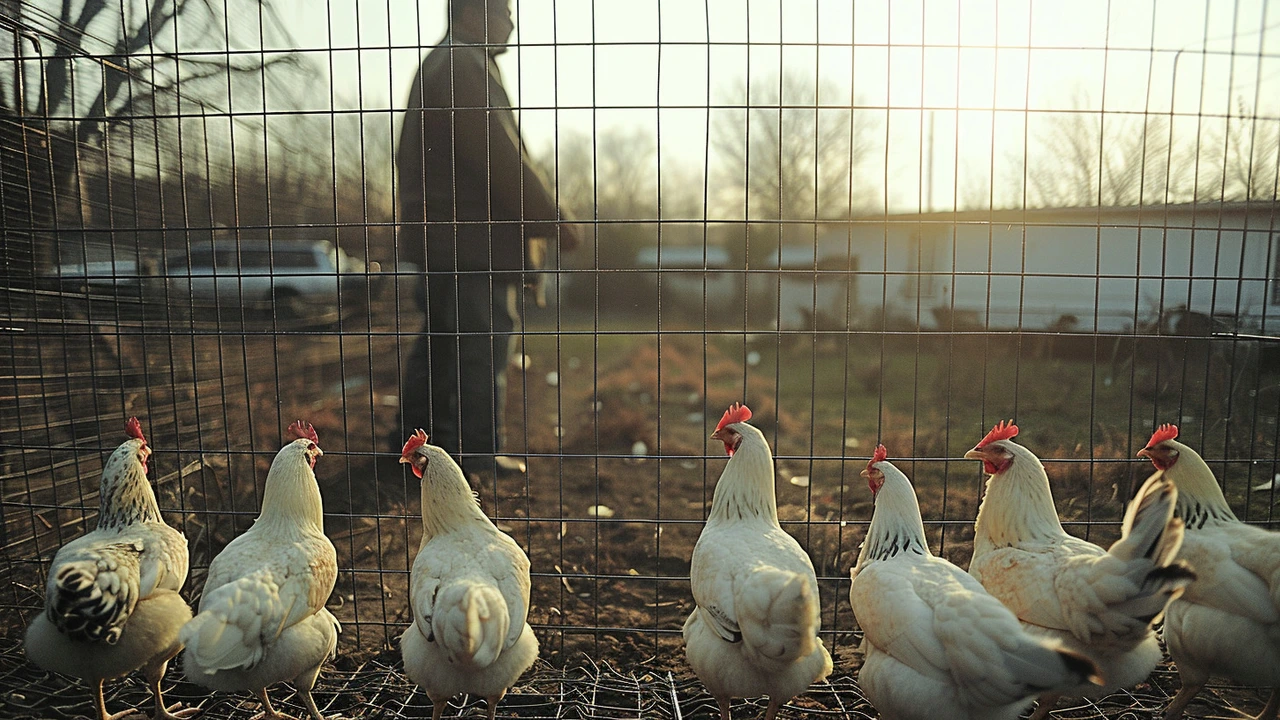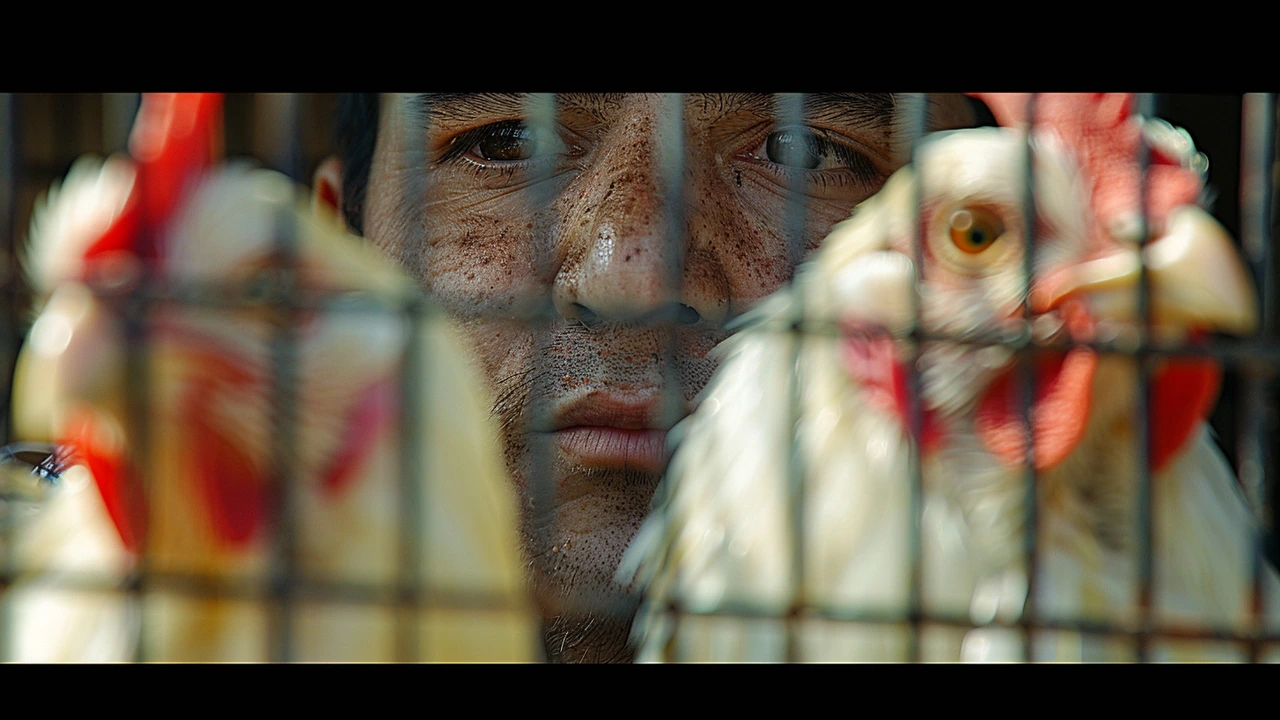First Reported Human Case of H5N2 Avian Flu in Mexico Highlights Need for Vigilance
A 59-year-old man in Mexico has tragically succumbed to complications caused by the H5N2 subtype of avian flu, marking a significant first in the annals of health crises for the nation. This case, the first human instance of H5N2 in Mexico, also represents the first identification of the H5 virus in a human within the country. It is a sobering reminder of the persistent threat posed by avian influenza viruses and the necessity for continuous global health vigilance.
The unfortunate man had underlying health conditions, compounding the severity of the infection. He had been bedridden for three weeks, developing the illness around April 17. His health deteriorated rapidly, and he was hospitalized on April 24. Despite medical efforts, he succumbed to the illness the very same day. This sudden and severe progression underscores the potential danger of avian flu strains, particularly among vulnerable populations.
While avian flu viruses have historically jumped from animals to humans, they typically have not acquired the ability to transmit between humans efficiently. Nevertheless, each new case serves as a stark reminder of the ever-present risk of a potential pandemic should such mutations occur. The World Health Organization (WHO) remains vigilant, emphasizing the importance of global surveillance and preparedness in mitigating the threat posed by these viruses.
The Role of Global Surveillance
Global surveillance plays a critical role in the early detection and management of emerging infectious diseases. The WHO has been steadfast in its stance that rigorous monitoring is essential to identify and contain outbreaks before they escalate. This latest case in Mexico highlights the significance of such efforts. According to the WHO, the risk to the general population remains low, but they stress the importance of ongoing surveillance to monitor any potential changes in the virus's behavior or transmission patterns.
The WHO has issued guidelines to help mitigate the spread of avian flu viruses. One of the key recommendations is to avoid contact with livestock, especially in areas where animals are raised, slaughtered, or may have spread their fecal matter. Hand hygiene is another critical component of prevention, with frequent hand-washing advised to reduce the risk of transmission.
Comparisons and Global Context
In comparison to other instances of avian flu, the H5N2 case in Mexico is part of a wider narrative of avian influenza outbreaks worldwide. In the United States, a highly pathogenic form of bird flu was detected in a goat in March, leading to subsequent outbreaks in cows and poultry in multiple states. Since April 1, four human cases have been reported, illustrating the diverse and persistent challenges posed by these viruses across different regions and species.
These incidents highlight the interconnectedness of animal and human health, reinforcing the need for One Health approaches that consider the health of humans, animals, and ecosystems collectively. The presence of avian flu in various species underscores the importance of surveillance not just among human populations, but across wildlife and livestock as well.

The Imperative of Public Education
Public awareness and education are powerful tools in the fight against infectious diseases. Understanding the modes of transmission and symptoms of avian flu can empower individuals to take preventative measures and seek timely medical intervention. The WHO and health authorities continue to advocate for widespread public health campaigns that focus on these aspects.
It is crucial that communities are informed about the potential risks associated with avian flu and the steps they can take to protect themselves. This includes knowledge about avoiding areas with high exposure to livestock, practicing good hand hygiene, and being vigilant about symptoms, especially among vulnerable populations such as the elderly and those with underlying health conditions.
Looking Ahead: Preparedness and Prevention
As the global community grapples with various health threats, the imperative for preparedness and prevention cannot be overstated. Investments in public health infrastructure, research, and international cooperation are key components in the strategy to combat emerging infectious diseases. The lessons learned from this case in Mexico, along with others around the world, underscore the value of being proactive rather than reactive in our health strategies.
Efforts to develop vaccines and antiviral treatments are also critical. While current public health measures focus on surveillance and containment, the development of effective medical countermeasures can offer a line of defense against future outbreaks. Policymakers and health professionals must continue to prioritize research and innovation in this field.

Conclusion
The death of the 59-year-old man in Mexico from the H5N2 avian flu subtype is a poignant reminder of the ever-present threats posed by infectious diseases. It highlights the need for global surveillance, public awareness, and ongoing research to prevent potential pandemics. While the risk to the general population remains low, the vigilance of health authorities and the cooperative efforts of the international community are paramount in safeguarding public health. As we reflect on this case, the importance of preparedness, prevention, and education becomes ever clearer, ensuring we are better equipped to face future health challenges.







Jasmine Hinds
Stay safe out there 😊
Madison Neal
The epidemiological ramifications of zoonotic spillover events such as the H5N2 case necessitate robust One Health frameworks; integrating veterinary surveillance, clinical virology, and public health informatics can attenuate transmission dynamics.
Moreover, the case underscores the importance of genomic sequencing to monitor antigenic drift and potential reassortment events that could augment human-to-human transmissibility.
John Crulz
It's sobering to see another avian influenza subtype breach the species barrier, yet the data so far suggest limited human-to-human spread.
Continued vigilance, especially in regions with dense poultry farming, remains paramount to catching any shifts in the virus's reproductive number.
Anita Drake
From a cultural standpoint, community outreach in rural Mexican locales should respect local customs while promoting biosecurity measures; engaging trusted community leaders can bridge gaps between health authorities and residents.
Education campaigns that incorporate indigenous languages and visual aids are more likely to resonate and foster compliance.
Eduardo Lopez
It is a stark reminder that complacency in the face of emerging pathogens is a luxury we cannot afford; the tragic outcome of the 59‑year‑old patient epitomizes the dire consequences when vulnerable individuals confront virulent strains without adequate prophylactic safeguards.
The scientific community must accelerate the development of broadly neutralizing antibodies and next‑generation vaccines that can preemptively target multiple hemagglutinin subtypes.
Meanwhile, policymakers should allocate resources toward strengthening laboratory capacity in endemic regions, ensuring timely diagnostic confirmation.
Public health messaging must transcend mere statistics and convey the human toll behind each case, lest the societal apathy erode preventive behaviors.
Only through a concerted, multidisciplinary effort can we hope to outpace the evolutionary agility of influenza viruses.
Nancy Perez de Lezama
Honestly the article could have cut the fluff and just said the virus is dangerous.
Matt Heitz
While other nations scramble over H5N2, the United States maintains a robust influenza surveillance infrastructure that outperforms many of its peers; our CDC’s advanced genomic pipelines can detect reassortment events faster than most.
Susan Mark
For anyone wondering how to protect themselves, regular handwashing with soap for at least 20 seconds and avoiding raw poultry are simple yet effective barriers against avian flu.
Additionally, wearing protective masks when visiting farms can further reduce aerosol exposure.
Jason Jennings
Sure, another bird flu story, because we haven't heard enough of those, right?
Diego Vargas
Thers no doubt that influenza viruses mutate at a rapid rate; waching the latest WHO reports is essential for staying updated on strain variations.
Alex Lee
This is just fearmongering.
Vida Yamini
The emergence of a human H5N2 case in Mexico serves as a poignant illustration of the intricate interplay between animal reservoirs and human health.
It underscores the necessity of integrating veterinary epidemiology, environmental monitoring, and clinical surveillance within a cohesive One Health paradigm.
By fostering interdisciplinary collaborations, we can enhance early detection capabilities and streamline response mechanisms.
Moreover, public education initiatives must be culturally sensitive, employing local dialects and community leaders to disseminate vital preventive measures.
Hand hygiene, proper use of personal protective equipment, and avoidance of direct contact with sick birds are foundational practices that can mitigate transmission.
Governments should invest in expanding laboratory networks, ensuring that samples are processed swiftly and accurately.
Timely genomic sequencing of viral isolates will illuminate mutation patterns, informing vaccine design and antiviral strategies.
In parallel, the development of universal influenza vaccines remains a critical research frontier that could circumvent the need for strain‑specific updates.
Health authorities must also prioritize the protection of high‑risk groups, such as the elderly and those with chronic comorbidities, through targeted outreach.
Transparent communication about risk levels helps maintain public trust and prevents the spread of misinformation.
While the current risk to the general population may be low, complacency can erode the hard‑won gains of previous pandemic preparedness efforts.
Continuous funding for surveillance programs ensures that detection thresholds remain sensitive enough to capture nascent outbreaks.
International cooperation, facilitated by entities like the WHO, enables data sharing and coordinated action across borders.
Ultimately, the collective resilience of our global health infrastructure will determine our ability to confront not only H5N2 but also future zoonotic threats.
Let us therefore channel our resources and expertise into a proactive, rather than reactive, stance on infectious disease control.
James Lawyer
From a regulatory standpoint, the WHO's International Health Regulations obligate member states to report zoonotic influenza events promptly, thereby facilitating coordinated global response.
Compliance with these statutes not only enhances transparency but also supports the mobilization of resources for containment and research.
Abby Culbertson
i feel sad for the fam.